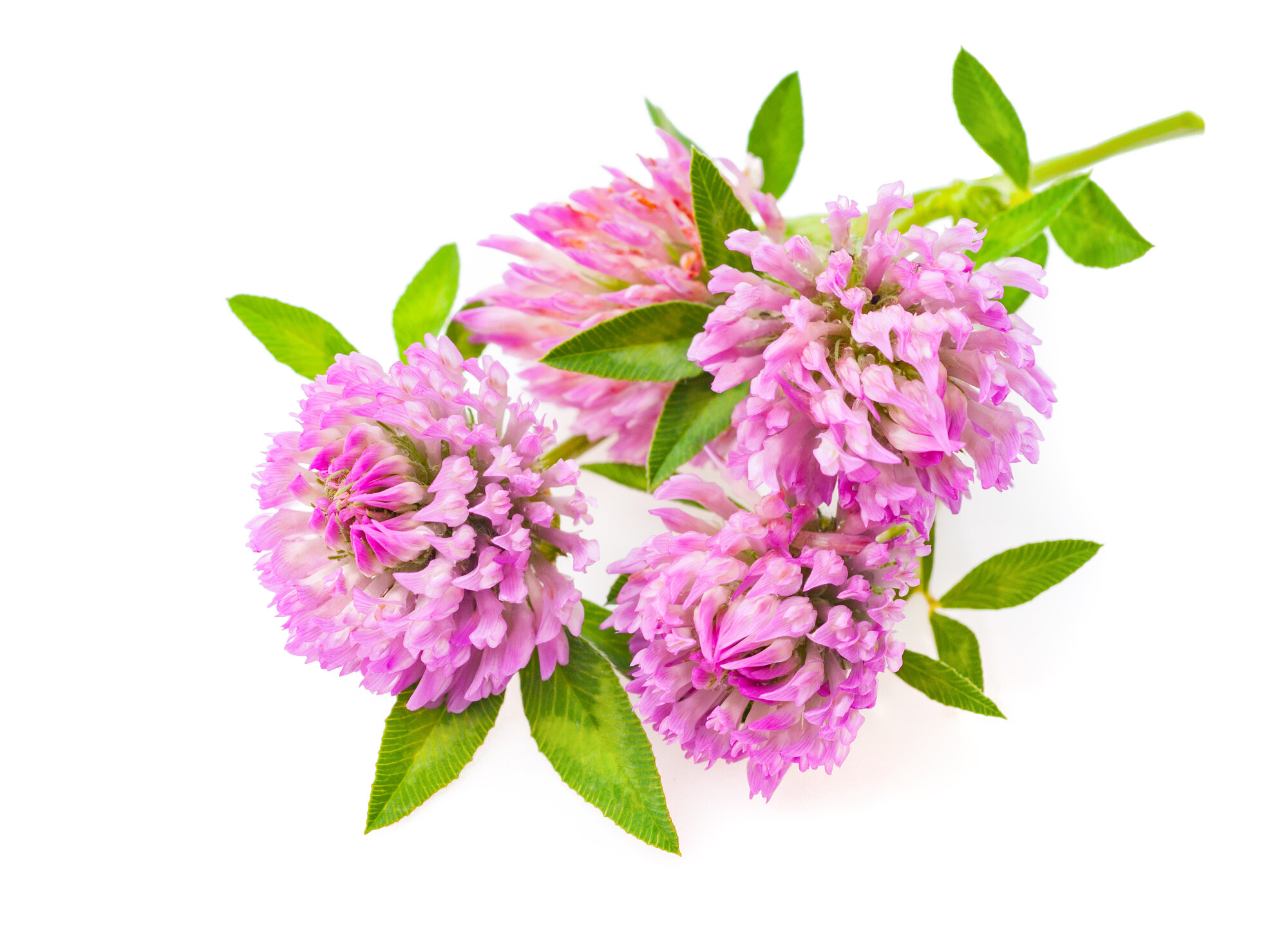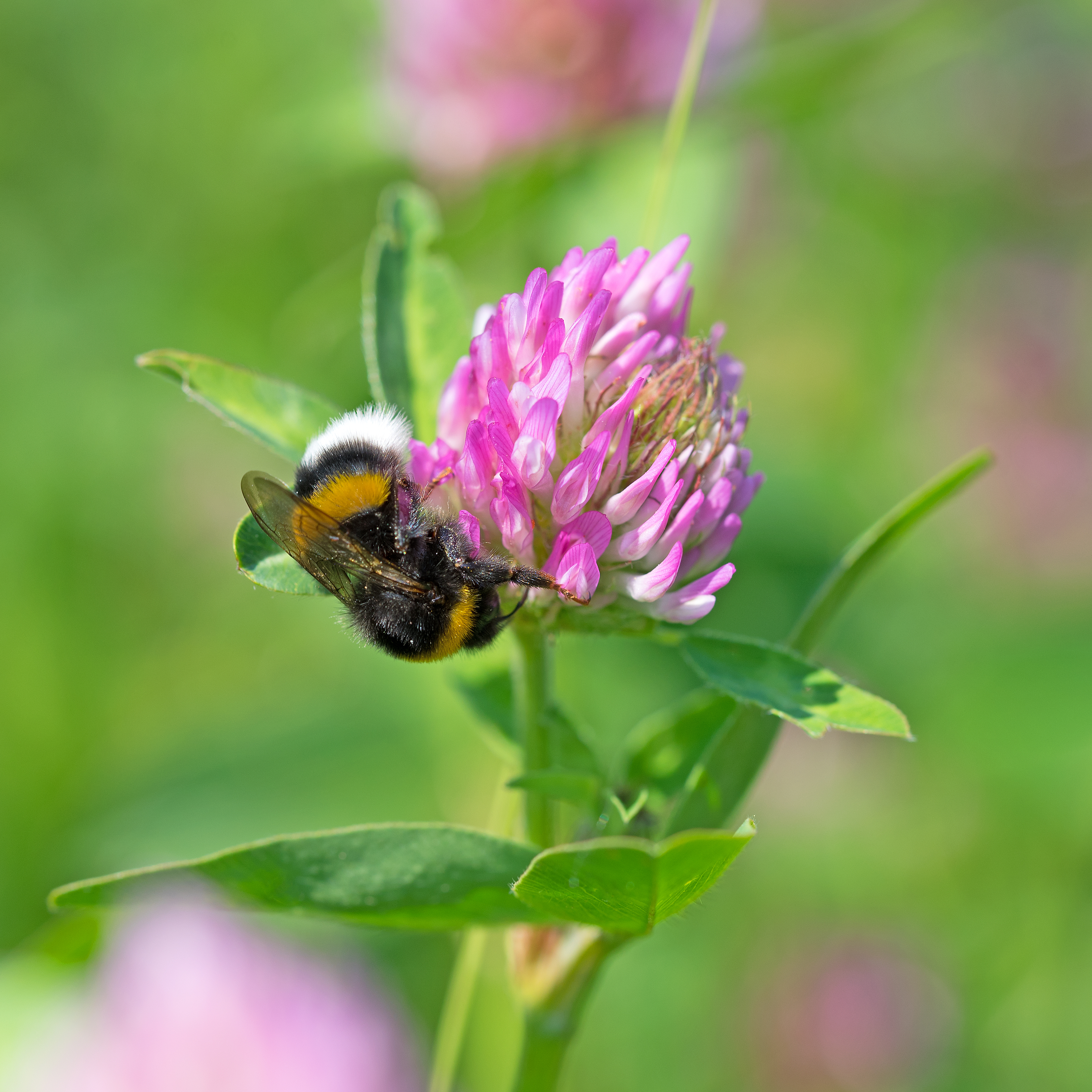In focus: Red clover
Red clover

Trifolium pratense
Other names: Cow clover, common purple trefoil, purple clover, meadow clover, wild clover
| Family: Fabaceae (legumes) | Thousand grain weight: 1.9 g |
| Subfamily: Faboideae | Plant height: 20-70 cm |
| Genus: Trifolium (clover) | Sowing rate: 25 kg/ha |
| Species: Red clover | Number of chromosomes: 2n = 14 |

Origin and history
Red clover, also known as wild clover, is one of around 245 species of clover. It has been cultivated in Germany since the 11th century, though clover crops remained uncommon until 1750. Evidence of red clover cultivation in northern Italy and the Rhine Basin dates back to the 15th century, while its first appearance in books of herbs came in the 16th century.
Red clover was introduced to central Germany in the mid-18th century for its agricultural benefits by the German farmer, agricultural reformer and freemason Johann Christian Schubart, who was given the noble title of Edler von dem Kleefeld in 1784. While he was not the first to cultivate clover, he was a moving force behind the integration of clover into crop rotations, which led to a lasting increase in Germany’s clover cultivation. Red clover is native to Germany, though its range extends throughout all of Europe, North Africa and parts of Central Asia. Globally, the plant is found in subtropical and temperate regions (though not in Australia). Its properties have led to red clover’s use in many countries as a medicinal plant. Today, it is still cultivated extensively in China and Eastern Europe.

Use
Red clover is an annual to biennial plant that is highly versatile and can be used in a wide variety of areas. In addition to its use as a medicinal plant or a fodder plant, red clover is also used as an alternative option for green manure, and is even consumed by humans.
In agricultural settings, red clover is also used as a protein-rich fodder plant that is ideally planted in mixtures with grasses. Prior to flowering, it serves as top-quality fresh forage, though it can also be harvested for hay. Red clover is also a good green manure plant, and can help to improve poor soils. As a legume, it can convert atmospheric nitrogen into forms that plants can use and make it available to the subsequent crop.
Insects also find red clover to be a worthy stop on their flight paths. Plants belonging to the Faboideae subfamily are a favoured habitat for caterpillars belonging to butterfly species such as the painted lady, pale clouded yellow and various gossamer-winged butterflies and burnet moths. It is also a nectar source that honeybees and bumblebees love.
As early as the Middle Ages, red clover was said to have special powers, and was an invaluable medicinal plant for afflictions of the bowel and menstruation issues. To this day, the many valuable compounds in red clover flowers help to treat heart and circulatory diseases. They are also used to treat coughs and injuries. Its main use, however, is to alleviate a variety of ailments that women experience during menopause.
The plant’s shoots are used in cooking, bringing a mild, slightly nutty flavour to salads. The fresh sprouts contain many valuable minerals and trace elements, as well as higher amounts of magnesium, calcium and potassium. The flowers and young leaves can also be used in a variety of recipes and teas.

Cultivation
The botanical name for red clover consists of the genus name, Trifolium, which describes the three-leaf pattern of clover (from the Latin tres/tri, three, and folium, leaf). The species name, pratense, represents red clover’s preference for growing on meadows (Latin for “growing on meadows”).
Red clover forms deep roots, with a taproot that can grow to a length of up to 2 metres. Its long roots are one of the reasons for red clover’s outstanding adaptability. It frequently grows in pastures, meadows, fields and the sides of roads on moist, permeable, nutrient-rich and calcareous clayey and loamy soils, though it can also be found at altitudes of up to 2,500 metres. Red clover even grows on nutrient-poor soils in regions with an unfavourable climate, though in such areas it tends to lack vigour. Waterlogged soils, however, are not suitable for red clover.
The best time to plant is in the spring, between March and May. Since red clover is positively photoblastic, meaning that its germination requires the presence of light, seeds should be sown at a depth of no more than 0.5-1 cm. It tends to bloom between late April and mid-October. The flowers are often an important source of sustenance for bees and other insects, especially in spring.


